
Ship Design & Construction: Laurie Balan, COO, Genoa Design
on your responsibilities today at Genoa Design International?I've spent the majority of my career, over 20 years now, in shipbuilding, primarily in Canada. That's where we've seen a significant resurgence of ship design and shipbuilding over the last couple of decades. I graduated from Memorial University in Newfoundland & Labrador as a mechanical engineer, and I thought at the time I was going to spend my career in the offshore oil and gas industry because it was booming at the time. After a short stint overseas, I returned to the Atlantic provinces and was introduced to the working world

Co. Innovation Centre in NL Opens Its Doors to the World
Innovation Centre, discusses how this unique facility will engage with organizations and technologists – both inside and outside of Newfoundland & Labrador – to positively impact work in the maritime, offshore energy and subsea sectors.A native of St. John’s and a graduate of Memorial University, Meagan Kay-Fowlow, President of the Co. Innovation Centre, had built a career outside of the province focused on innovation related to governance mechanisms at the global level.But the pull of her native Newfoundland & Labrador plus its proximity to the ocean, and the investment in technology
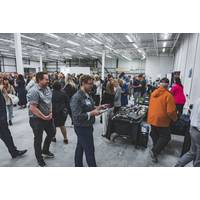
Technology Time - Newfoundland & Labrador Style
for lifeboats, fast-response craft and ice management, offering hands-on and realistic training. The harsh environment of the North Atlantic builds the confidence and competence of seafarers, explained President and CEO Randy Billard. Partnering with the National Research Council of Canada and Memorial University of Newfoundland builds expertise for multiple markets, including defense, oil and gas, as well as shipping. Looking ahead, Billard foresees an increasingly digital world requiring technology access anytime, anywhere. “Maritime businesses will have to formulate solutions that can be accessed
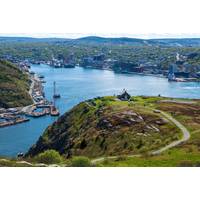
Spaces & Places: Inside the ‘Crown Jewels’ of Newfoundland & Labrador
couldn't deal with [our unique] operational challenges, the reality of our conditions: this mixture of weather, ice, sea state and isolation, as well as the variability and quick change in the weather patterns here,” explained Chris Hearn, director of the Centre for Marine Simulation at Memorial University of Newfoundland (MUN). “When you live in a harsh environment, you have limited resources and you’re isolated, you have to be really good at coming up with solutions and problem solving on demand,” added Meagan Kay-Fowlow, president of the Co. Innovation Centre. “You
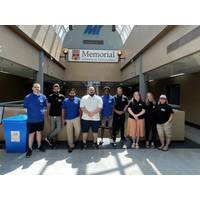
Students Spend Summer Mapping Seafloor for Seabed 2030
internship facilitated by TCarta which resulted in 39,304km² of 10m-resolution satellite-derived bathymetry across four areas of interest worldwide, all within eight weeks. The participants were either recent graduates or current students in the Marine Institute Ocean Mapping program of Memorial University, Canada. The mobilization was a collaborative effort among TCarta, Memorial University and The Nippon Foundation-GEBCO Seabed 2030 Project, which aims to inspire the complete mapping of the seafloor by 2030.The bathymetry was generated for the coastlines of Somalia, the Mosquito Coast

MTS, SUT to Honor Marty Klein with Capt. Don Walsh Award for Ocean Exploration
;Marty’s influence extends through his numerous publications, patents, and his involvement with various prestigious organizations, including the Explorers Club, the National Academy of Engineering, and the IEEE. His legacy is further cemented through the student scholarship he endowed at Memorial University, honoring his son’s memory and supporting future ocean professionals. Upon receiving the news of the award, Marty said, “I am humbled and honored. When I was a student at MIT, I read with fascination the Life Magazine cover story about the historic deep dive to 35,813 feet
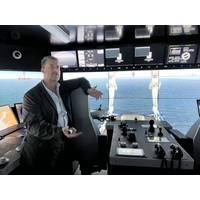
Simulation Training Profile: Chris Hearn, Memorial University
Memorial University in St. Johns, Newfoundland & Labrador, Canada, is a microcosm of how this unique regional cluster has parlayed its geographic locale and harsh, unique operating conditions into world leadership in the maritime, offshore energy and subsea tech spaces. An alumni, a professional mariner and now the Director of the Center for Marine Simulation, the Fisheries & Marine Institute at Memorial University, Chris Hearn has his hand on the pulse of the tectonic changes reshaping maritime and offshore energy simulation training today. From artificial intelligence to autonomy to fuel

FET Secures ROV Supply Contract for Ocean Research Facility
which are suited to underwater industry applications,” said Kevin Taylor, FET’s Vice President – KMS and Subsea Robotics.The ROV will be manufactured at FET’s UK facility at Kirkbymoorside, North Yorkshire.The agreement comes shortly after FET provided an ROV to the Memorial University of Newfoundland for similar purposes
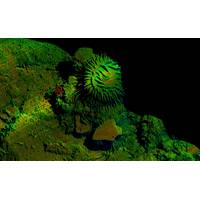
Voyis Provides Subsea Tech for Galápagos Coral Expedition
Canadian underwater technology company Voyis has worked on a scientific expedition with Memorial University of Newfoundland in the Galápagos Islands, exploring and documenting the enigmatic world of cold-water coral ecosystem.The expedition, led by Chief Scientist Katleen Robert, was funded by Schmidt Ocean Institute, and also included the participation of the Charles Darwin Foundation and the Galápagos National Park.The Galápagos Islands, renowned for their unique biodiversity, are home to a multitude of cold-water corals, including those residing in vertical habitats.Taking


 February 2025
February 2025





